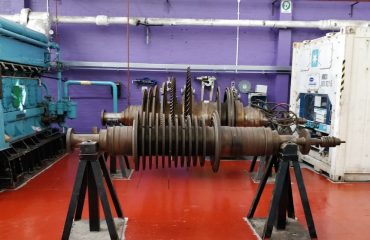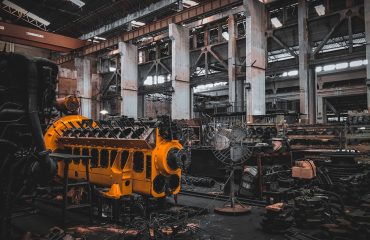The world of materials science is constantly evolving, and one of the most exciting advancements lies in the application of nanotechnology to traditional materials. Steel, a cornerstone of modern infrastructure and manufacturing, is benefiting immensely from this revolution. Nanotech in steel surface treatments is no longer a futuristic concept; it’s a rapidly developing field delivering significant improvements in performance and longevity. This post will delve into the fascinating world of nano-enhanced steel, exploring the various techniques and their remarkable impact.
1. Enhancing Corrosion Resistance with Nanoparticles
Corrosion is a significant problem for steel structures, leading to costly repairs and potential safety hazards. Nanotechnology offers a powerful solution. By incorporating nanoparticles into coatings or directly onto the steel surface, we can significantly enhance corrosion resistance. For example, nanoparticles of zinc oxide (ZnO), titanium dioxide (TiO2), and cerium oxide (CeO2) exhibit excellent corrosion-inhibiting properties. These nanoparticles create a dense, protective barrier that prevents the penetration of corrosive agents like water and oxygen. The mechanism often involves the formation of a passive layer on the steel surface, preventing electrochemical reactions that lead to rust formation. Furthermore, the high surface area of nanoparticles allows for a greater number of active sites to interact with corrosive species, further enhancing protection. This translates to longer lifespan for steel components in harsh environments, from marine structures to automotive parts.
2. Improving Wear Resistance through Nanocoatings
Steel components often experience significant wear and tear, especially in applications involving friction and abrasion. Nanotechnology provides a means to enhance wear resistance by applying nanocoatings. These coatings, typically composed of nanoparticles of materials like diamond-like carbon (DLC), tungsten carbide (WC), or silicon carbide (SiC), create an extremely hard and durable surface layer. The exceptionally small size of the nanoparticles allows for a dense, uniform coating with minimal porosity, resulting in superior wear resistance compared to traditional coatings. This is particularly beneficial in applications such as cutting tools, engine parts, and bearings, where reducing wear translates to increased efficiency and extended service life. The enhanced hardness and improved adhesion of these nanocoatings also contribute to their effectiveness.
3. Enhancing Surface Hardness and Strength with Nanostructured Steel
Beyond surface treatments, nanotechnology is also transforming the bulk properties of steel itself. Nanostructured steel, created through techniques like severe plastic deformation, possesses significantly enhanced mechanical properties. The introduction of nano-sized grains within the steel matrix leads to a substantial increase in hardness and strength. This is because the smaller grain size limits dislocation movement, the primary mechanism of plastic deformation. The resulting material is stronger, tougher, and more resistant to deformation, leading to improved performance in high-stress applications. This advancement is particularly relevant in industries requiring high-strength materials, such as aerospace and automotive.
4. Self-Healing Coatings: The Future of Steel Protection
Research is actively exploring the development of self-healing coatings for steel using nanotechnology. These coatings incorporate microcapsules containing corrosion inhibitors or healing agents. When a scratch or crack occurs in the coating, these microcapsules rupture, releasing their contents to fill the defect and restore the protective barrier. This self-healing capability significantly extends the lifespan of the coating and reduces the need for frequent maintenance. Different types of nanoparticles and encapsulation methods are being investigated to optimize the self-healing properties and tailor them to specific environmental conditions. This represents a significant leap forward in the durability and longevity of steel structures.
5. Applications of Nanotech in Steel Surface Treatments: A Broad Spectrum
The applications of nanotechnology in steel surface treatments are incredibly diverse and span numerous industries. From the construction industry, where enhanced corrosion resistance is crucial for bridges and buildings, to the automotive industry, where improved wear resistance is essential for engine components, the benefits are widespread. The aerospace industry utilizes nano-enhanced steel for lighter, stronger components, while the medical industry leverages its biocompatibility for implants and surgical instruments. Even the oil and gas industry benefits from the enhanced durability and corrosion resistance in pipelines and drilling equipment. The versatility of nanotechnology in this field promises continued innovation and expansion into new sectors.
The integration of nanotechnology into steel surface treatments is ushering in a new era of enhanced performance and longevity. As research continues to advance, we can expect even more innovative applications and breakthroughs in this exciting field. The future of steel is undoubtedly nano-enhanced.
SEO-Friendly Tags:
- Nanotechnology in Steel
- Steel Surface Treatments
- Corrosion Resistance Coatings
- Nanoparticle Coatings for Steel
- Wear Resistant Steel




